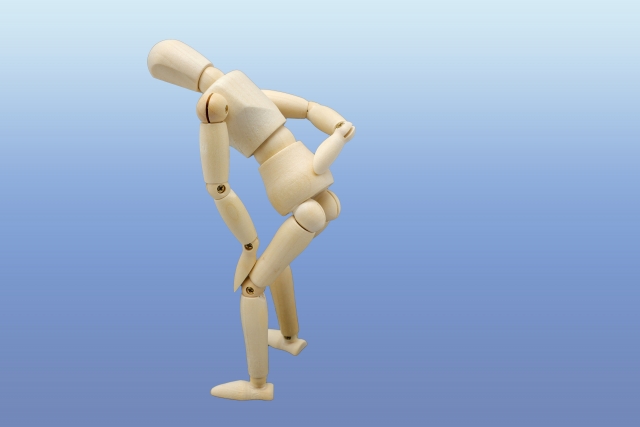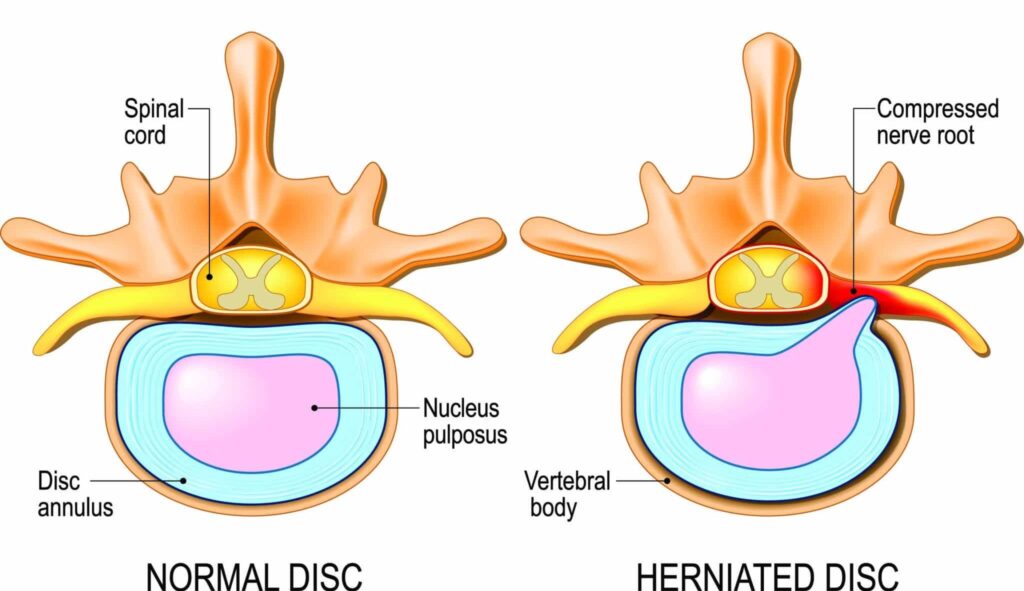
Intervertebral disc herniation… Whether you’ve experienced it yourself or not, you’ve probably heard the term at least once.
So, what exactly does herniation mean? The term herniation originates from the Latin word for “protrusion.” It refers to a condition where the disc is compressed, causing the tissue to protrude. To explain in more detail, an intervertebral disc consists of a jelly-like substance called the nucleus pulposus surrounded by the annulus fibrosus.
When the jelly-like nucleus pulposus is pushed outward, it can cause the surrounding annular fibers to be pushed out as well, leading to herniation or protrusion.
Directly behind the intervertebral disc runs the spinal cord within the vertebral column. Compression in this area can result in symptoms such as numbness, pain, and motor dysfunction at the nerve level.

In medicine, herniation is evaluated on a five-stage scale, and in humans, conditions can range from annular bulging (where the nucleus pulposus pushes the outer fibers) to nucleus pulposus extrusion (where the annular fibers rupture and the jelly-like substance escapes, often requiring surgery).
At “Spine Chiropractic”, I see many cases of intervertebral disc herniation. Most of my patients come to me for a second opinion after their condition did not improve following a diagnosis from their physician.
Now, let me explain my treatment concept.
The severity of symptoms varies, but my treatment method remains consistent.
First, I use chiropractic examinations to determine whether the symptoms involve nerve pain. I differentiate between discogenic pain without nerve involvement and nerve pain caused by herniation. Regardless of the specific condition, I identify and remove the factors that are specifically burdening the problematic area.
At “Spine Chiropractic”, I focus on how to distribute the concentrated burdens (such as poor posture, body weight, and specific lifestyle habits) from a musculoskeletal perspective.
Specifically, I aim to increase the flexibility of associated muscle groups and strengthen weakened muscles. My treatment plan focuses on restoring the movement and coordination of related joints (other than the affected disc).
The most likely cause of disc problems is the loss of the normal physiological curves (S-curve) of the spine and the consequent loss of joint mobility, resulting in continuous stress on the same intervertebral disc.
Therefore, it is crucial to restore mobility to the vertebral joints (spinal joints) other than the affected area.
This also significantly involves muscle flexibility and strength. We assess and balance overactive and weakened muscles.
By performing comprehensive treatments to distribute daily stresses, I can alleviate symptoms.
Ultimately, the patient’s daily lifestyle habits are a significant factor, so lifestyle guidance is an essential part of my treatment.
As lifestyle and habits vary, I discuss daily routines during treatment sessions and create a personalized treatment plan to prevent recurrence, which is the fundamental approach of chiropractic care at “Spine Chiropractic”.
If you are suffering from the above symptoms and have not yet tried chiropractic treatment, please consider visiting “Spine Chiropractic”, conveniently located near Bashamichi Station, Nihon-Odori Station, Kannai Station, and Sakuragicho Station. I am committed to doing my best to help you improve.